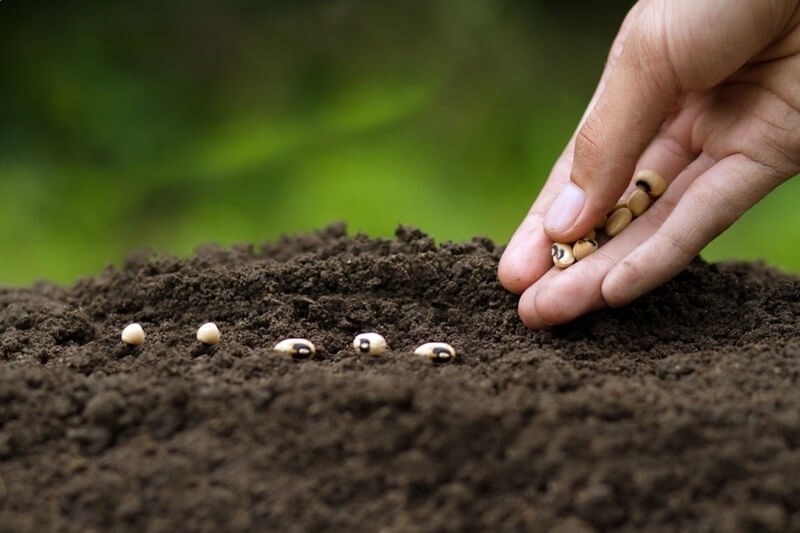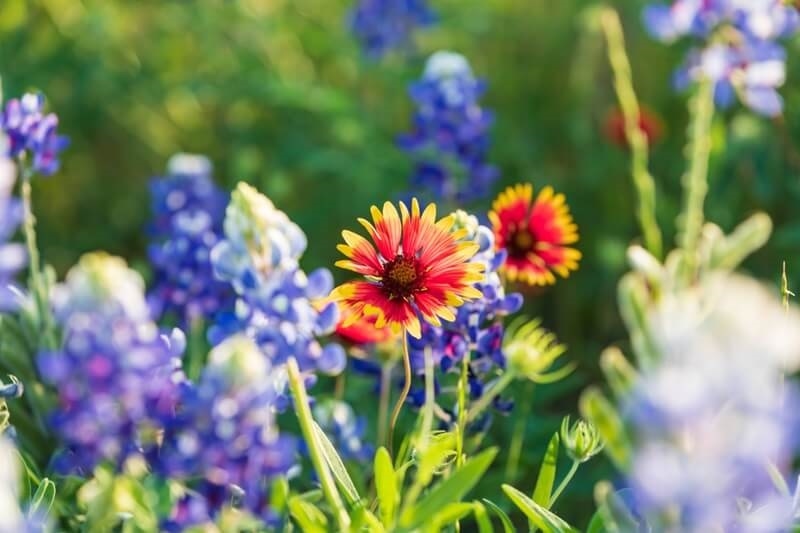
If you’ve ever stood in your backyard, staring at your garden beds and wondering when on earth to plant what, you’re not alone. Gardening in Dallas is an art — and sometimes, it feels like the weather has a sense of humor. One week it’s chilly and crisp, the next it’s blazing like mid-July. Still, that’s the beauty of Texas gardening: with the right timing and a little strategy, you can have something blooming or growing almost every month of the year.
That’s where a seasonal planting guide comes in handy. Think of it as your year-round gardening companion — helping you decide what thrives in each season, how to plan your beds, and when to make those smooth transitions between crops or flowers. Whether you’re a first-time gardener or a seasoned Dallas grower, this guide will help you make sense of the soil, sun, and seasons.
Let’s break it down season by season, with real-world tips (and a few “learned the hard way” lessons) to help you build your dream garden — one season at a time.
Before we dive into the planting calendar, let’s talk about what makes gardening in Dallas a bit of a balancing act. The city sits in USDA Hardiness Zones 8a and 8b, which means mild winters and hot, humid summers. That’s both a blessing and a challenge.
You can plant almost year-round, but timing is everything. Too early, and a late frost can zap your seedlings. Too late, and the summer heat can burn them out before they bloom.
Dallas also gets unpredictable rain patterns — heavy storms one week, bone-dry conditions the next. So, choosing the right plants and keeping flexible with your schedule makes all the difference.
Ready to plan your garden calendar? Let’s take a look at each season, what grows best, and how to keep your garden thriving through the changes.

Ah, spring — the season that makes gardeners giddy. The air warms, the soil softens, and suddenly every nursery looks irresistible. But in Dallas, spring moves fast, so you need to jump in early.
So, what to plant in spring in Texas? March and April are prime months for cool-weather crops like lettuce, kale, spinach, radishes, and peas. As the temperatures climb, start transitioning to warm-weather favorites like tomatoes, peppers, cucumbers, and beans.
Don’t forget the flowers. Marigolds, zinnias, cosmos, and petunias love Dallas springtime. They’ll reward you with bursts of color before the heat really kicks in.
A little tip from local gardeners: water deeply but less frequently. Shallow watering encourages weak roots, and once summer rolls in, those plants won’t stand a chance.
Summer in Dallas can feel like gardening inside an oven. But don’t let that scare you off. With the right summer garden planting calendar, you can still grow plenty of heat-tolerant plants — and keep your garden looking alive.
Start by mulching heavily. It keeps roots cool and helps soil retain moisture. Then, focus on plants that actually like the heat: okra, eggplant, melons, peppers, and sweet potatoes. Basil, rosemary, and oregano also thrive in full Texas sun.
Shade cloths or taller companion plants (like sunflowers or corn) can help shield delicate greens. And if your garden looks a little tired mid-summer, that’s okay. It’s normal. Just keep up with watering and maintenance, and it’ll bounce back by late August when the heat breaks.
If you’re itching for flowers, lantana, vinca, and periwinkle are your go-tos. They’re practically unbothered by the heat.
Fall is when the magic happens again. Cooler weather, less stress on plants, and perfect conditions for another round of growing. For many gardeners, fall in Dallas is even better than spring.
Here’s where fall garden tips for beginners really matter. Start planting cool-season veggies again — broccoli, cabbage, kale, and carrots are top picks. You can also sneak in fast-growing greens like arugula and lettuce before the first frost (which usually hits around mid-November).
Want fall color? Go for pansies, chrysanthemums, and ornamental kale. They bring life to your garden just when most people’s yards start fading.
And here’s a pro trick: refresh your soil before replanting. Add compost or organic fertilizer to replace nutrients used up during the summer. Healthy soil means happy plants — and fewer headaches later.
Now, Dallas winters aren’t exactly brutal, but they do bring some challenges. The good news? It’s far from a downtime for gardeners.
Focus on maintenance. This is the perfect time to transition garden beds by season — cleaning out old plants, prepping soil, and pruning perennials. Cover delicate plants with frost cloths or burlap on chilly nights, and keep potted plants near walls or under porches where it’s warmer.
If you still want to grow, winter greens like kale, spinach, and chard do surprisingly well here. Herbs like parsley and cilantro also love the cooler temps.
And if you’re really itching to plant, start seeds indoors for early spring crops. That way, you’re ready to go the moment frost risk passes.
Okay, let’s get practical. You’ve got the seasons figured out — now it’s about timing and organization. Learning how to plan planting schedules saves you time, money, and frustration.
Start with a garden notebook (yes, an actual one). Write down planting dates, what worked, what didn’t, and which varieties thrived. Over time, it becomes your personal gardening bible.
Then, think in cycles. Instead of replanting everything at once, stagger your planting. This “succession planting” ensures continuous harvests instead of one giant yield that goes bad before you can eat it all.
And don’t forget crop rotation. Switching plant families between beds each season keeps soil nutrients balanced and reduces pest buildup. For example, follow tomatoes with leafy greens or beans instead of planting the same crop year after year.
Moving from one season to the next isn’t just about swapping plants. It’s about giving your soil a breather and setting up your next round for success.
When you transition garden beds by season, start by clearing old debris and pulling out spent roots. Then loosen the soil, mix in compost, and test your pH if you can. A quick top dressing of mulch helps regulate temperature and moisture while your new seedlings settle in.
If you’re tight on time, interplanting works wonders. That means mixing crops with different lifespans — like adding young seedlings among mature plants that are nearly done. By the time one crop finishes, the next is already growing.
For low-maintenance gardeners, native plants are a blessing. They’re adapted to Texas’ wild weather swings and usually need less water.
Some local favorites include Texas sage, black-eyed Susans, and lantana. Perennials like salvia and coneflowers come back year after year, saving you both time and money.
When you mix these with seasonal vegetables and herbs, you get a dynamic garden that looks good and functions beautifully year-round.
Every gardener in North Texas knows the drill: pests, heat, and the occasional surprise freeze.
For pests, keep an eye out for aphids, whiteflies, and spider mites — they love the warm, dry air. Neem oil or insecticidal soap usually handles them without harming beneficial insects.
For heat, deep watering (about once or twice a week) and early morning irrigation make a huge difference. Watering at night may seem tempting, but it often leads to fungal problems.
As for freezes, keep frost cloths handy and mulch around the base of perennials. Even a few extra degrees of protection can save your plants.
Gardening shouldn’t just be about growing pretty things — it’s also about taking care of your little ecosystem.
Use compost instead of chemical fertilizers whenever possible. Collect rainwater in barrels to cut down on water bills. And plant pollinator-friendly flowers like lavender and bee balm to attract bees and butterflies.
These small habits make your garden more resilient and environmentally friendly over time.
It might sound like a lot — juggling watering schedules, adjusting for heat, keeping up with changing seasons. But once you find your rhythm, it becomes second nature.
There’s a special joy in seeing your yard evolve with the months — tulips in spring, tomatoes in summer, mums in fall. Even in winter, you’ll catch hints of green peeking through.
And honestly? Gardening connects you to time itself. You start paying attention to weather patterns, soil texture, the sound of rain. It’s grounding, in the best way possible.
Dallas might throw you a few curveballs — but with the right seasonal planting guide, you’ll be ready for anything. Each season has its charm, its lessons, and its rewards.
Spring’s energy, summer’s abundance, fall’s calm, and winter’s quiet — together, they create a rhythm that turns your backyard into something more than a space. It becomes a living story.
So go ahead. Grab your gloves, dig into that soil, and start planting with the seasons. You’ll be surprised how quickly your garden — and your confidence — grow.
This content was created by AI